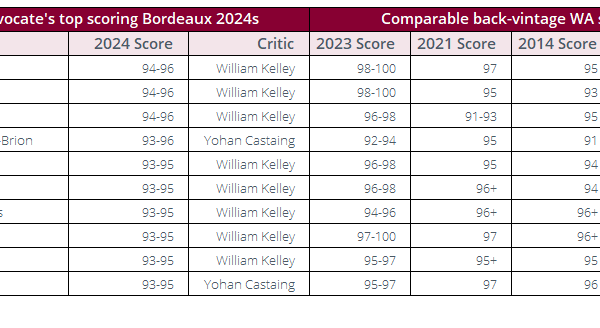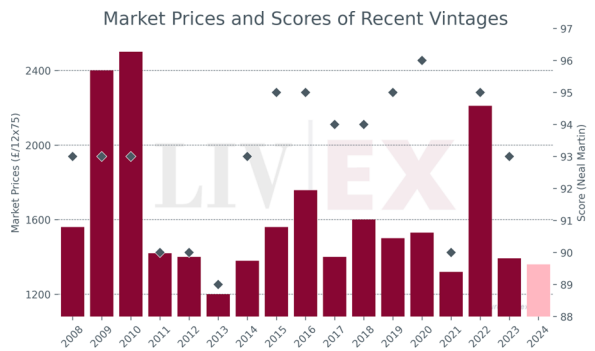Profile
Owner: Domaines Baron de Rothschild
Appellation: Pauillac
Vineyard area: 71 hectares
Average annual production: 20,000-25,000 cases p/a
Standard blend: Cabernet Sauvignon (70-80%), Merlot (20-30%)
History
One of the early owners of Chateau Duhart-Milon is said to have been “Sir Duhart”- a retired pirate of Louis XV whose house on the Pauillac port existed up until the 1950s. And although the estate’s origins (and early proprietors) may in truth be less distinctive, the traditional tale and “pirate house” provide the inspiration for the Duhart-Milon label.
Not much is known about the vineyards prior to the French Revolution and the first surviving records of Duhart-Milon date back to the 19th century. Texts indicate that what was at that time a relatively large estate was owned by a man named Mandavy, who produced well-known, high-quality wine. After his death in the 1830s, the estate was taken over by Pierre Casteja and the wine was classified as a fourth growth in 1855. Unfortunately, much of Casteja’s tenure was frustrated by war and depression. As a result, the Casteja family sold off large parts of the vineyard and many of the vines died. In the 25 years following 1937 the declining estate changed hands five times, until it was eventually bought and rescued by the Rothschild family in 1962.
Duhart-Milon then expanded rapidly as the family purchased neighbouring plots and undertook major draining, uprooting, replanting and installation work. 48 years on, the vines have matured and the chateau has once again reclaimed its former ranking as a Pauillac fourth growth, and an exceptional wine.
The Rothschild connection
During the Asian-led fine wine market bull run of 2009-2011, Duhart-Milon’s prices rocketed on account of its association with Lafite Rothschild. Its index climbed 222% in three years.
Since then, prices have fallen back to the levels of early 2010. The index is showing a gain of 57% in six years, still outperforming its parent index – the Left Bank 200 – and Lafite itself. While Duhart-Milon’s prices are unlikely to reach the heights of mid-2011 anytime soon, the wine now presents something of an opportunity to buyers. The quality of recent vintages has risen, with the 2008, 2009 and 2010 scoring 94, 97 and 96 respectively from Parker. In his tasting note for the 2009, Parker wrote:
“Since few consumers other than Chinese billionaires can afford wines such as Lafite Rothschild, perhaps it is time for readers to take a look at Duhart-Milon, which sells for less than Lafite’s second wine. The Rothschilds have invested heavily in resurrecting this property to near super-star status, and the 2009 appears to be the finest Duhart I have ever tasted.”
Of the 2010 he was similarly effusive: “This blend of 73% Cabernet Sauvignon and the rest Merlot is fabulous, a dead ringer for Lafite in a great vintage. (It is probably better than many of the Lafites of the 1960s and 1970s, and even some of the vintages in the 1980s.)”
It seems that the Fourth Growth has lately produced wines of First Growth quality – but not price. In June 2011 Duhart-Milon 2009 had a market price of £1,240 per 12×75. This has now fallen by 56%: the 97-point 2009, the finest that Parker had tasted, is just £575. Below we have applied the POP (Price-Over-Points) score – Liv-ex’s loose measure of value – to Duhart-Milon’s most recent vintages. In theory, the lower the POP score the better value the wine, and 2008, 2009 and 2010 look appealing. And next to the POP scores for Lafite, even more so.
All prices are in GBP and are for 12x75cl cases. Scores are from www.erobertparker.com
POP
A wine’s POP score is its price-over-points ratio, our loose measure of value. It is calculated by dividing the price of a nine-litre case of wine by a shortened 20-point score. We have calculated this 20-point score by simply subtracting 80 from the official rating from Robert Parker (for barrel-score spreads we use the mid-point of the score), on the basis that any wine under 80 points is unlikely to attract a secondary market. In theory, the lower the POP score the better value a wine is.






